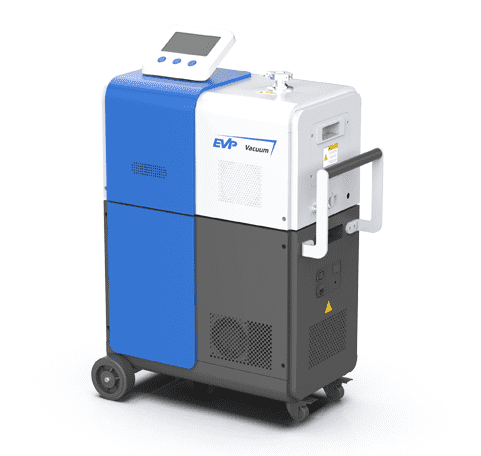Helium leak detector used for EV relays
Is the helium mass spectrometer suitable for leak detection applications on EV relays?
Helium Leak Testing for EV relays
EV relay, also known as high-voltage DC relay, mainly consists of eight parts: moving contact, fixed contact, container box, main terminal, sealed contact area, mixture, permanent magnet, and itself. Its function is to use small currents to control large currents and protect switches.
During the production process, a certain amount of process gas is sealed to the contacts to achieve the effect of electric arc cooling. Therefore, relay leakage should be measured to avoid process gas leakage, which may cause relay failure.
Helium leak detection of semi-finished EV relay products
The negative pressure helium injection method is used for leak detection, and the general leak detection process is as follows:
1. Install the workpiece on the leak detector fixture, with the lower end of the fixture directly connected to the leak detector’s leak detection port;;
2. Vacuum the workpiece through the built-in vacuum system of the instrument;
3. After the background leakage rate value of the instrument panel is reduced to the specified leakage rate value, a certain amount of helium is sprayed on the surface of the workpiece to start leak testing;
4. If the instrument displays a leakage rate value lower than the set leakage rate value, the current leakage index of the inspected workpiece is qualified;
5. If the detected workpiece leakage does not meet the standard, the instrument displays a leakage value higher than the set leakage value, and emits an audible alarm. The screen jumps red, reminding the testing personnel to pay attention.
EV finished helium leak detection relay
Generally, negative pressure helium injection method or simple vacuum box method is used.
The negative pressure helium spraying method directly connects the copper tube at the inflation port of the EV relay to the leakage detection port of the helium detector. The specific leakage detection process is the same as that of semi-finished product leakage detection. After the leak detection is completed, the process gas is filled into the qualified test piece through a copper tube, and then the seal is cut off. This method cannot detect the leakage of copper pipe cuts and has high process requirements.
A simple vacuum box leak detection method involves sealing helium gas inside the product, and then placing the goods into a small leak detection vessel (usually referred to as a leak detection tank or leak detection box) connected to the leak detector of the leak detection instrument. When inspecting the finished product of the EV relay, process gas and a small amount of helium are filled into the inspected part, the gas injection copper pipe is cut off, sealed, and placed in the leakage tank. Then empty the leaking tank. If the copper tube is not sealed or the tested part leaks and does not meet the standard, the instrument will sound and light an alarm to remind that it is not qualified.
(The article comes from the Internet. If reprinting is not allowed, please contact our company to delete it.)

